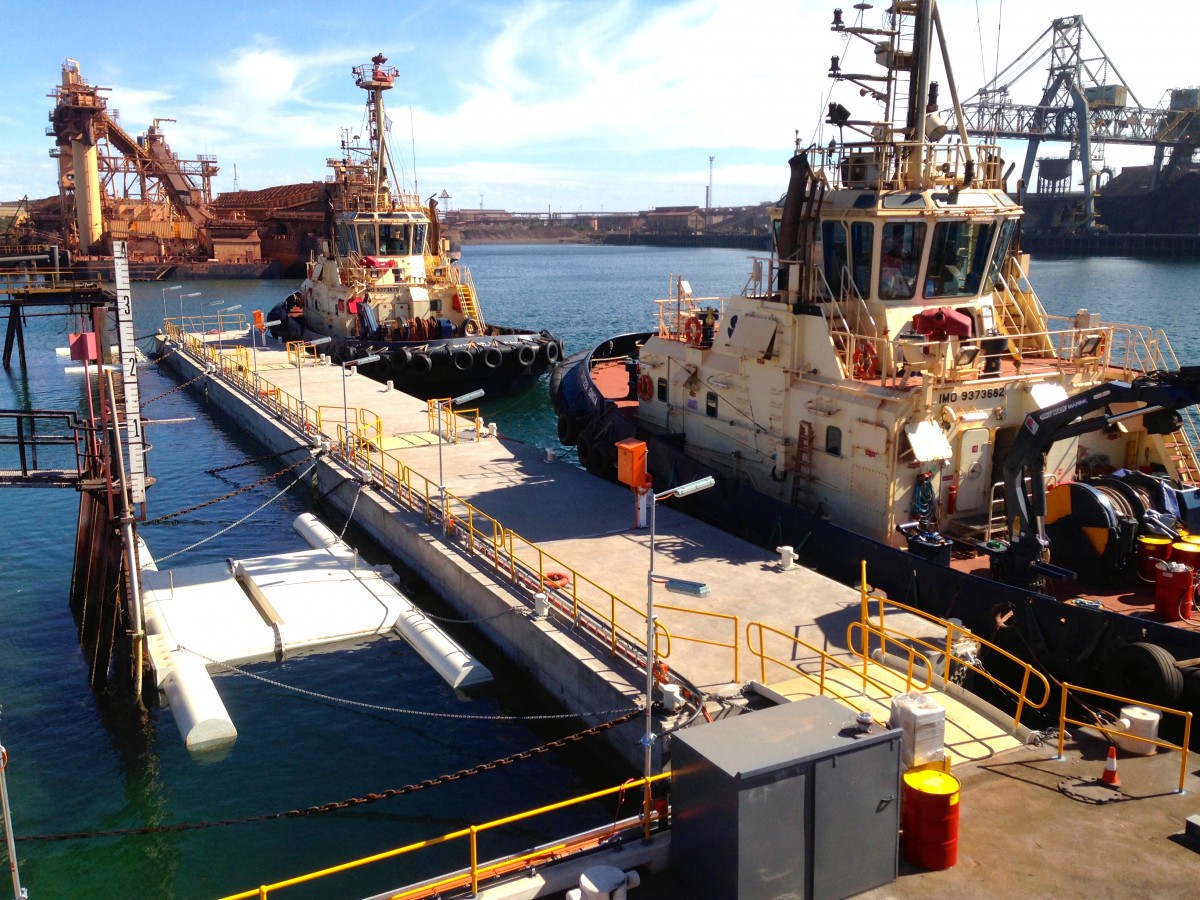The floating berths for Svitzer’s tug fleet in Whyalla, South Australia, are now complete. This challenging design and build project has been constructed by MDC of Falmouth, England, with Beckett Rankine working as their designer.
The project consists of three concrete berthing pontoons each measuring 6m x 20m and one steel pontoon which supports a linkspan, cargo handling crane and fuelling facility for the tugs.
A further challenge was the requirement to secure the facility, which is designed to accommodate up to three 1,000 tonne tugs at a time, without any piles since there was no floating piling rig available. Our solution was to space the new pontoons off a pair of existing stub jetties using tubular steel camels and then secure the pontoons back with mooring chains to shore bollards. The system produced an economical solution that avoided the need for dredging by placing the berthing face sufficiently offshore to be in naturally deep water.The concrete pontoons had to be built on site as Whyalla is a remote mining town and as the completed pontoons weighed 180t each there was no suitable facility to launch them. Investigations showed that the largest mobile crane in the area had a lift capacity of 58t at the required reach for the launch so we designed the pontoons to be part built, craned into the water and then the upper section cast while afloat. Designing the pontoons so that they could safely withstand a four point lift while only half complete was demanding and required close construction tolerances to control the lift weight. The pontoons were lifted with the shutters for the second pour in place so that, once in the water, their completion was very rapid.
Included in our brief was production of the documentation for obtaining the statutory consents which included Building Control approval. Unusually Australian regulations consider floating structures to be ‘buildings’.
This was MDC’s first overseas project and it is a tribute to them that, despite the difficulties of working in a remote area over 10,000 miles from their home base, they delivered an excellent quality facility on budget.



